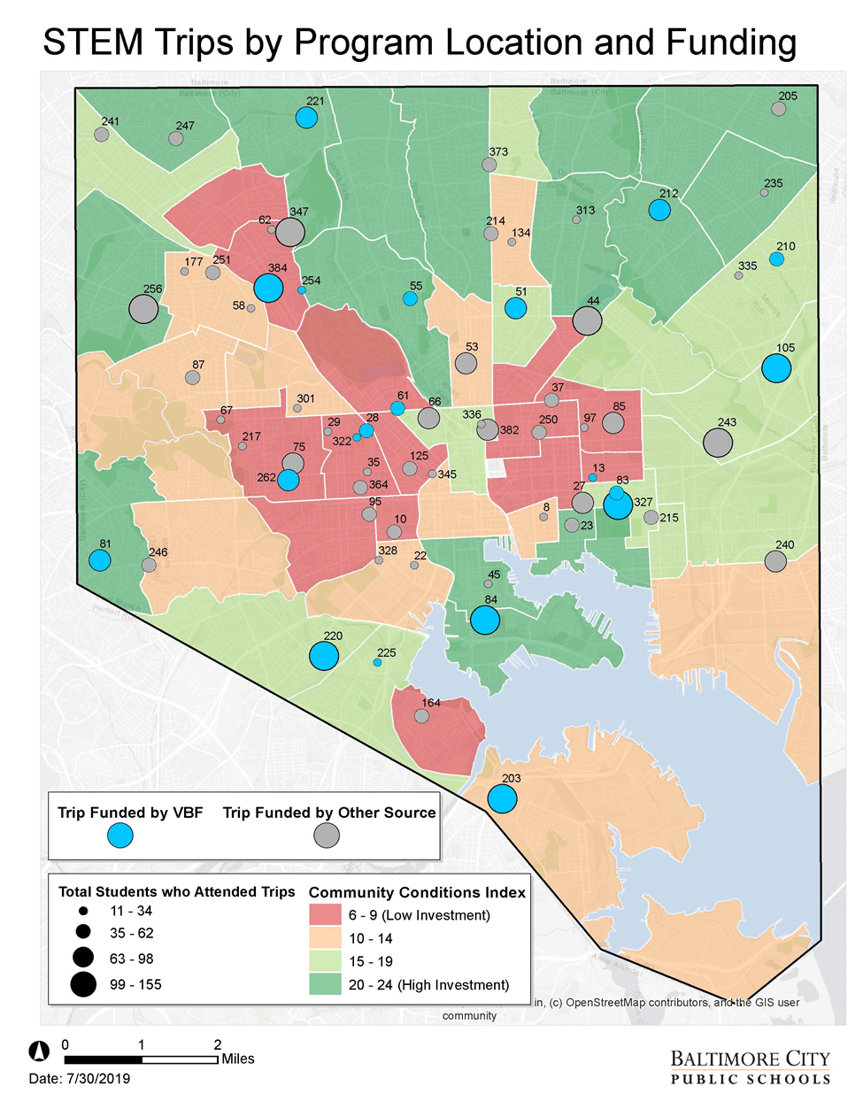Category: Curriculum-Embedded Field Experiences
Initial Workgroups Launched
The BmoreSTEM Ecosystem Launch on February 19, 2019 was a success. Thoughtful and enthusiastic input, demonstrated that all sectors are committed to contributing. Since then the planning committee and potential workgroup co-chairs have been working on determining what workgroups we can launch. Every workgroup had to address a significant need, have your support, and require cross-sector collaboration. BmoreSTEM is proud to announce our initial workgroups with the following objectives:
- Create a registration, ticketing, and transportation system for curriculum-embedded STEM experiences that is user-friendly, centralized, and sustainable. Co-Chairs: Allison Burr-Livingstone & William Redmond
- Create a program to increase the supply of secondary STEM teachers. Co-Chairs: Christian Anderson & Kia Boose
- Develop BmoreSTEM 2.0 infrastructure and cultivate resources to make it sustainable. Co-Chairs: Rachel Duden (ex-oficio) & Myra Norton
Co-chairs will be forming workgroups and scheduling meetings. As the workgroups meet they will be narrowing and refining the objectives as they study possible strategies and metrics. These initial workgroups will demonstrate our ability to affect change as our ideas for additional, much-needed, workgroups continue to incubate. Additional workgroups will launch as ideas blossom and our capacity grows. Within the next 60 days we hope to announce an objective for a workforce development workgroup (co-chairs Mike Hinkey and Stan Wolfe). Please stay tuned to BmoreSTEM.net for updates on workgroups and feel free to reach out to co-chairs with suggestions, or to volunteer, as we all continue to figure out how we can best work together to develop STEM opportunities in Baltimore.
Learning Outside the Classroom
Curriculum-Embedded STEM Experiences
Learning is not limited to inside the classroom. City Schools has created opportunities for students to take field trips to Baltimore attractions that support their learning connected to the curriculum. We call these experiences curriculum-embedded field experiences. Just like traditional field trips, these opportunities are engaging for students. The difference is that these experiences are directly aligned to rigorous, existing, City Schools curriculum. So far, City Schools has designed the following curriculum-embedded field experiences for Science:
| Gr | Unit | Venue |
| 1 | 2: Can you see the light | Baltimore Museum of Industry |
| 2 | 3: What do plants need? | Howard Peter Rawlings Conservatory |
| 2 | 3: What do plants need? | Great Kids Farm |
| 3 | 4: Survival of the fittest | Maryland Zoo in Baltimore |
| 4 | 1: Its electric | National Electronics Museum |
| 5 | 5: Save the bay | Chesapeake Bay Foundation |
| 6 | IQWST LS1: Where Have all the Creatures Gone? | National Aquarium |
| 7 | IQWST LS3: Genetics – Constructing a Model of Inheritance | BioEYES |
Visit Baltimore, the official destination marketing organization (DMO) for Baltimore, is a strategic partner supporting this initiative. The Visit Baltimore Foundation is generously supporting transportation to several of the provider institutions, while several others provide their own transportation.
[wr_button button_text=”Donate to Visit Baltimore” link_type=”url” button_type_url=”https://baltimore.org/foundation-donate” open_in=”new_browser” button_alignment=”inherit” button_margin_top=”0″ button_margin_left=”0″ button_margin_bottom=”0″ button_margin_right=”0″ button_size=”default” button_color=”btn-default” appearing_animation=”0″ disabled_el=”no” ][/wr_button]




